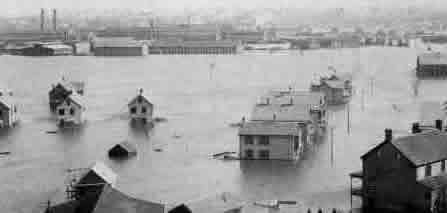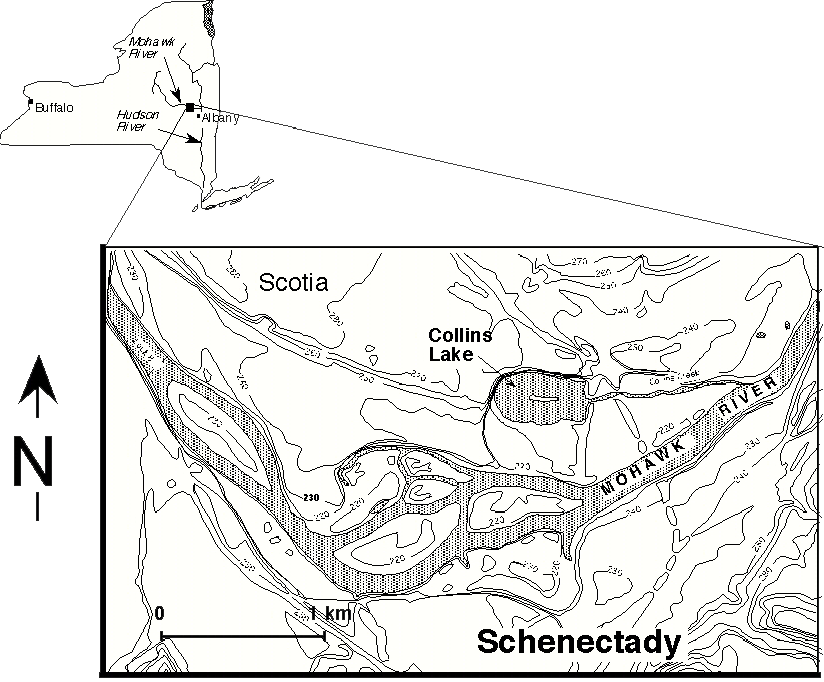
ICE JAMS AND FLOODING
Union College
| HOME |
| General Info |
| Flood History |
| Jams and Dams |
| Schoharie River |
| Collins Pond |
| Media Matters |
Collins Pond - a remnant of the Mohawk River in Scotia NY |
Collins Lake is a small oval-shaped lake, located on the floodplain of the Mohawk River in the Village of Scotia, New York. A number of hypotheses have been forwarded as to the origin of the Lake. There are three popular hypotheses that attempt to explain its origin: a plunge pool, a kettle lake, or an oxbow lake.
The geological evolution of Collins Lake, Scotia NY, as revealed from sub-bottom profiles and sediment core analysis. A thesis (here modified) that looks at the sediment infilling of this abandoned river channel, now part of Collins Park in Scotia NY. A ~1000 Year Record of Sedimentation in Collins Lake as Evidence of Local Storminess and Flooding on the Mohawk River (New York). Thesis that uses sediment layers in Collins pond to address storm frequency.
|
This document can be located from http://minerva.union.edu/garverj/mohawk/
© Environmental Science and Policy Program, Union College, Schenectady N.Y. 12308-3107. All rights reserved. No part of the document can be copied and/or redistributed, electronically or otherwise, without written permission from the Director of the Environmental Studies Program, Union College, Schenectady NY, 12308-2311, USA.
|
||
